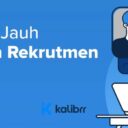Eight Common Hiring Biases to Be Mindful Of

Hiring bias is what stands in the way most of building a truly diverse team of professionals, and unfortunately, we are ALL guilty of unconsciously having a bias or two
It is well documented how diverse hiring practices are fundamental to reaching business success, particularly how building a diverse workforce not only improves workplace culture but also fortifies employee engagement and helps increase revenue. Armed with this information, an increasing number of employers continue to place more emphasis on hiring more diversely.
However, good intentions do not always immediately lead to good results, and changes in processes and new initiatives alone are not enough to ensure increased diversity in hiring. In fact, according to global research and advisory firm Gartner, hiring decisions are among the top aspects of the talent life cycle that is vulnerable to bias, and unfortunately, we all have biases in one way, shape, or form.
With that said, to best mitigate the effect of biases is to start with ourselves, and the following are some of the biases which, while common in the hiring process, we are often not too conscious of.
TOPICS
Affinity and Similarity Bias
There is nothing wrong with gravitating towards people we have a natural affinity with, be it having the same home town, growing up in the same city, or going to the same church. However, when this same affinity influences the hiring process, then it is clearly a bias as it places emphasis on something that isn’t tangible nor relevant to the hiring decision.
To the same extent, it is only natural to want to surround ourselves with people we like and feel we have a rapport with. The work environment is no different. However, this can also lead to our being more inclined to hire candidates who we view as having similar traits or characteristics as us, even when those things aren’t correlated with job performance.
Confirmation Bias
It is said that “first impressions last” and we often have a tendency to make up our minds about people during our initial encounters with them. This is usually taken to another level in hiring when recruiters form an impression about candidates as early as within 15 minutes of meeting them or, even more unfairly, even before the interview happens like when just seeing their resumes.
But the bias really takes to shape when not only when we do that, but also when we spend time with everything that follows– the rest of the interview, calling references, doing a background check– trying to confirm that first impression. So instead of a proper assessment, time is spent focusing on the positive qualities of “good” candidates, and the negative qualities of “bad” ones, with the obvious danger being missing out on qualified talent while hiring those that eventually don’t quite fit the job.
Conformity Bias
Reaching decisions as a group is not new in the hiring process, but can be an avenue for another unconscious bias. Based on a famous study called the Asch Experiment, which shows how our decision making can be affected by group peer pressure, Conformity Bias is when we chose one candidate over the other because our colleagues liked him or her, even though we think another candidate is more suited for the job.
Rather than simply giving in to the fear of irking colleagues or extending the hiring discussions, it’s best to look to standardized applicant scorecards to ensure hiring panels stick to a consistent rating scale when gauging candidates– basically relying on data rather than the “bandwagon effect”. These and similar solutions are available on platforms like Kalibrr, and are designed to minimize hiring bias.
Contrast Bias
Reviewing applicant resumes is a necessity in the recruitment process, and it’s sometimes being a tedious and time-consuming task is what leads to another bias in hiring. As we sift through applications, we can’t help but compare the candidates, effectively not allowing some to stand-out on their own merit as we are subconsciously pitting them against the resumes we’ve viewed beforehand.
In doing this, we are just altering our standards for every look-over of resumes that we do, and are not keeping with finding the most qualified person to fill our jobs. Job-matching/candidate-matching software (like that of Kalibrr’s) is helpful in this scenario, as it not only helps keep the time spent on the administrative task at a minimum but also allows for the hiring to remain rooted in qualifications.
Expectation Anchor
If there is one downside to exceptionally performing employees, it is that they tend to be too good for their roles and eventually move on. Despite them being seemingly irreplaceable, we, on the other hand, take on the mindset that the roles they vacate can only be fulfilled successfully by people who are exactly like them.
Having predecessors as anchors will have you gauging candidates based on the latter, while completely forgoing the merits of many of the former. A way to circumvent this bias is by developing structured interviews, particularly standardized questions, that will make it easy to follow a standard framework when assessing candidates.
Halo Effect
Similar to holding on to the idea that only someone who is exactly like their predecessor is the best person for the job, is the tendency to hold on to a certain positive quality of a candidate. Doing this turns that quality into a “halo”, and as a result of its “shine”, we tend to forego a comprehensive investigation into the candidate’s background.
Whether it’s the master’s degree they earned or the major companies they worked for, halos can take on many forms, and like with Expectation Anchors, keeping to a structured interview is what will help best ensure that all bases are covered and that the halo’s shine does not blind us to any lacking or negative qualities of a candidate.
Horn Effect
The exact opposite of the Halo Effect is the Horn Effect where instead of placing excessive emphasis a positive of a candidate, we center our decision on a negative aspect of their application and are outright unable to move past whichever that is.
While both the Halo and Horn effects should be avoided, the latter is likely more so, as it is never a fair assessment when we assume that just because the candidate is ineffective or outright bad at aspect A of a job, they are automatically not good at aspects B, C, D, and so on. Again, structured interviews and assessments are effective in avoiding this, solutions that are readily available with platforms such as Kalibrr.
Information Bias
Collecting and assessing information is one of the pillars of hiring and recruitment. Now, while the more information there is the better it is for making decisions, the tendency to think that the candidates who provide the most info are also the most qualified. Sure, candidates who willingly provide work samples and social media profiles often means they have credentials and nothing negative to hide, but it doesn’t immediately mean they are the best for the job.
Like dealing with other biases, sticking to the facts is ideal to avoid information bias. Through standardized interview questions and assessments, you can remain centered on only the information that supports candidates’ suitability and fit for roles, with anything else provided only being considered when they pass initial screening/s and are then being assessed for culture fit and the like.
These are but a few of the biases we may unconsciously have as we assess future employees or colleagues, and recognizing that each is key in being able to not only hire and work with professionals that have different backgrounds but also better ensure that they indeed are the best able to fulfill their role.
Need help with recruitment? Sign up for Kalibrr and start hiring better today!
Kalibrr is a technology company that aims to transform how candidates find jobs and how companies hire talent. Placing the candidate experience at the center of everything it does, the company continues to attract the best talent from all over, with over 2.5 million professionals and counting. Kalibrr ultimately connects these talents to companies in search of their next generation of leaders.
The only end-to-end recruitment solutions provider in Southeast Asia, Kalibrr is headquartered in Makati, Philippines, with offices in San Francisco, California, and Jakarta, Indonesia. Established in 2012, it has served over 18,000 clients and is backed by some of the world’s most powerful start-up incubators and venture capitalists. These include Y Combinator, Omidyar Network, Patamar Capital, Wavemaker Partners, and Kickstart Ventures.
For more business and recruiter advice, follow Kalibrr on Facebook, Twitter, LinkedIn, and Instagram.





Belum ada komentar yang tersedia!